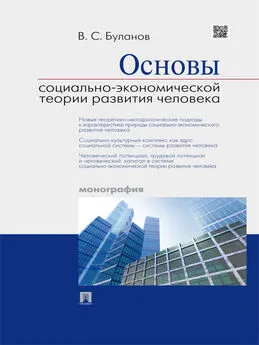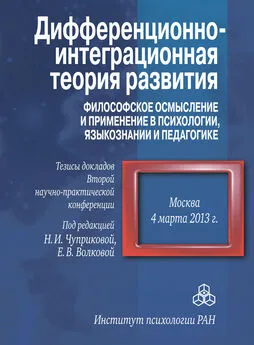Роберт Тайсон - ПСИХОАНАЛИТИЧЕСКИЕ ТЕОРИИ РАЗВИТИЯ
- Название:ПСИХОАНАЛИТИЧЕСКИЕ ТЕОРИИ РАЗВИТИЯ
- Автор:
- Жанр:
- Издательство:Деловая книга
- Год:1998
- Город:М.
- ISBN:5-88687-019-9
- Рейтинг:
- Избранное:Добавить в избранное
-
Отзывы:
-
Ваша оценка:
Роберт Тайсон - ПСИХОАНАЛИТИЧЕСКИЕ ТЕОРИИ РАЗВИТИЯ краткое содержание
Авторы книги, крупнейшие американские психоаналитики, особое внимание уделяют эго-психологии, одному из самых популярных направлений в современном психоанализе. Изданная во многих странах мира, данная книга — новейший свод психоаналитических теорий развития — стала настольной для профессиональных психотерапевтов, психологов и студентов.
ПСИХОАНАЛИТИЧЕСКИЕ ТЕОРИИ РАЗВИТИЯ - читать онлайн бесплатно ознакомительный отрывок
Интервал:
Закладка:
Galenson, E., and Roiphe, H. (1971). The impact of early sexual discovery on mood, defensive organization, and symbolization, Psychoanal. Study Child, 6:195-216.
Galenson, E., and Roiphe, H. (1974). The emergence of genital awareness during the second year of life. In Sex differences in behavior, ed. R. C. Friedman. New York: Wiley, pp. 223-231.
Galenson, E., and Roiphe, H. (1976). Some suggested revisions concerning early female development. J. Amer. Psychoanal. Assn., 24 (Suppl.):29-57.
Galenson, E., and Roiphe, H. (1980). The preoedipal development of the boy. J. Amer. Psychoanal. Assn., 28:805-828.
Geleerd, E. R. (1957). Some aspects of psychoanalytic technique in adolescence. Psychoanal. Study Child, 12:263-283.
Gilligan, C. (1982). In a different voice: Psychological theory and women's development. Cambridge: Harvard Univ. Press.
Glenn, J. (1984). A note on loss, pain and masochism in children. Amer. Psychoanal. Assn., 32:63-73.
Glover, E. (1945). Examination of the Klein system of child psychology. Psycho-anal. Study Child, 1:75-118.
Golding, W. (1955). Lord of the flies. New York: Capricorn Press.
Goldings, H. I. (1974). Jump — rope rhymes and the rhythm of latency development in girls. Psychoanal. Study Child, 29:431-450.
Gould, R. L. (1972). The phases of adult life: A study in developmental psychology. Amer. J. Psychiat., 129:521-531.
Green, A. (1975). The analyst, symbolization and absence in the analytic setting, Int. J. Psychoanal., 56:1-22.
Green, R. (1980). Patterns of sexual identity in childhood: Relationship to subsequent sexual partner preference. In Homosexual behavior: A modern reappraisal, ed. J. Marmor. New York: Basic Books, pp. 255-266.
Grcenacre, P. (1941). The predisposition to anxiety. In Trauma, growth and personality. New York: Norton, 1952, pp. 27-82.
Greenacre, R (1948). Anatomical structure and superego development. In Trauma, growth and personality. New York: Norton, 1952, pp. 149-164.
Greenacre, P. (1950). Special problems of early female sexual development. Psychoanal. Study Child, 5:122-138.
Greenacre, P. (1952a). Pregenital patterning, int.]. Psychoanal., 33:410-415.
Greenacre, P. (1952b). Trauma, growth, and personality. New York: Norton.
Greenacre, P. (1953a). Certain relationships between fetishism and the faulty development of the body image. In Emotional growth. Vol. 1. New York: Int. Univ. Press, 1971, pp. 9-30.
Greenacre, P. (I953b). Penis awe and its relation to penis envy. In Emotional growth. Vol. 1. New York: Int. Univ. Press, 1971, pp. 31-49.
Greenacre, P. (1958). Early physical determinants in the development of the sense of identity. In Emotional growth. Vol. 1. New York: Int. Univ. Press, 1971, pp. 113-127.
Greenacre, P. (1960). Considerations regarding the parent — infant relationship. In Emotional growth. Vol. 1. New York: Int. Univ. Press, 1971, pp. 199-224.
Greenacre, P. (1967). The influence of infantile traumas on genetic patterns. In Emotional growth. Vol. 1. New York: Int. Univ. Press, 1971, pp. 260-299.
Greenberg, J. R., and Mitchell, S. R. (1983). Object relations in psychoanalytic theory. Cambridge: Harvard Univ. Press.
Greenberg, M., and Morris, N. (1974). Engrossment: The newborn's impact upon the father. Amer. J. Orthopsychiat., 44:520 -531.
Greenson, R. R. (1954). The struggle against identification.y. Amer. Psychoanal. Assn., 2:200-217.
Greenson, R. R. (1968). Dis — identifying from mother: Its special importance for the boy. Int. J. Psychoanal., 49:370-374.
Greenspan, S. 1. (1979). Intelligence and adaptation: An integration of psychoanalytic and Piagetian developmental psychology. Psychological Issues, Monograph 47/48. New York: Int. Univ. Press.
Greenspan, S. l. (1981). Psychopathology and adaptation in infancy and early childhood: Principles of clinical diagnosis and preventive intervention. New York: Int. Univ. Press.
Greenspan, S. l. (1988). The development of the ego: Insights from clinical work with infants and young children. Amer. Psychoanal. Assn., 36 (Suppi.): 3-55.
Grolnick, S, A., and Barkin, L, eds. (1978). Between reality and fantasy: Transitional objects and phenomena. New York: Aronson.
Gross, G. E., and Rubin, 1. A. (1972). Sublimation: The study of an instinctual vicissitude. Psychoanal. Study Child, 27:334-359.
Grosskurth, P. (1986). Melanie Klein. New York: Knopf.
Grossman, W. l., and Stewart, W. (1976). Penis envy: From childhood wish to the developmental metaphor. J. Amer. Psychoanal. Assn., 24 (Suppi.): 193-212.
Gunsberg, L. (1982). A selected critical review of psychological investigations of the father — infant relationship. In Father and child, cd. S. H. Cath, A. R. Gurwitt, and J. M. Ross. Boston: Little, Brown, pp. 65-82.
Guntrip, H. (1961). Personality structure and human interaction. New York: Int. Univ. Press.
Guntrip, H. (1969). Schizoid phenonena, object relations and the self. New York: Int. Univ. Press.
Guntrip, H. (1975). My experience of analysis with Fairbairn and Winnicott. Int. Rev. Psychoanal., 2:145-156.
Guntrip, H. (1978). Psycho-analysis and some scientific and philosophical critics. Brit. J. Med. Psychol., 51:207-224.
Haith, M. M., Bergman, Т., and Moore, M. J. (1977). Eye contact and face scanning in early infancy. Science, 198:853-855.
Hall, G. S. (1904). Adolescence: Its psychology and its relations to physiology, anthropology, sociology, sex, crime, religion and education. New York: Appleton, 1916.
Hanly, C. (1978). Instincts and hostile affects. Int. J. Psychoanal., 59:149-156.
Harley, M. (1961). Genitality and structural development of adolescence. Amer. Psychoanal. Assn., 9:434-460.
Harley, M., and Weil, A. P. (1979). Introduction. In Infantile psychosis and early contributions. Vol. I of The selected papers of Margaret S. Mahler. New York: Aronson, pp. ix—xx.
Harlow, H. F. (1960a). Affectional behavior in the infant monkey. In Central nervous system and behavior, ed. M. A. B. Brazier. New York: Josiah Macy, Jr., Foundation, pp. 3-21.
Harlow. H. F. (1960b). Primary affectional patterns in primates. Amer. J. Ortho-psychiat., 30:676-684.
Harlow, H. F, and Zimmerman, R. R. (1959). Affectional responses in the infant monkey. Science, 130:421-432.
Harmon, R. J., and Ernde, R. N. (1971). Spontaneous REM behaviors in a microccphalic infant: A clinical anatomical study. Perceptual Motor Skills, 34:827-833.
Harmon, R, M.; Wagonfeld, S.; and Ernde, R. N. (1982). Anaclitic depression: A follow — up from infancy to puberty. Psychoanal. Study Child, 37:67-94.
Harries, M. (1952). Sublimation in a group of four — year — old boys. Psychoanal. Study Child, 7:230-240.
Hart, M., and Sarnoff, C. A. (1971). The impact of the menarche.y. Amer. Acad. Child Psychiat., 10:257-271.
Hartmann, H. (1939). Ego psychology and the problem of adaptation. New York: Int. Univ. Press, 1958.
Hartmann, H, (1950). Comments on the psychoanalytic theory of the ego. In Essays on ego psychology. New York: Int. Univ. Press, 1964, pp. 113-141.
Hartmann, H. (1952). The mutual influences in the development of ego and id. In Essays on ego psychology. New York: Int. Univ. Press, 1964, pp. 155-182.
Hartmann, H. (1953). Contribution to the metapsychology of schizophrenia. In Essays on ego psychology. New York: Int. Univ. Press, 1964, pp. 182-206.
Hartmann, H. (1955). Notes on the theory of sublimation. In Essays on ego psychology. New York: Int. Univ. Press, 1964, pp. 215-240.
Hartmann, H. (1956). Notes on the reality principle. In Essays on ego psychology. New York: Int. Univ. Press, 1964, pp. 241-267.
Hartmann, H., and Kris, E. (1945). The genetic approach in psychoanalysis. Psychoanal. Study Child, 1: 11-30.
Hartmann, H.; Kris, E.; and Locwenstein, R. (1946). Comments on the formation of psychic structure. Psychoanal. Study Child, 2:1 1-38.
Hartmann, H., and Loewenstein, R. (1962). Notes on the superego. Psychoanal. Study Child, 17:42-81.
Hayman, A. (1969). What do we mean by «Id»? J. Amer. Psychoanal. Assn., 17:353-380.
Hayman, A. (1989). What do we mean by «phantasy»? Int. J. Psychoanal., 70:105-114.
Heimann, P. (1962). Notes on the anal stage. Int. J. Psychoanal., 43:406-414.
Heimann, P. (1966). Comments on Dr. Kernberg's paper (Structural derivatives of object relationships). Int.J. Psychoanal., 47:254-260.
Herzog, E., and Sudia, C, (1973). Children in fatherless families. In Review of child development research. Vol. 3, ed. В. М. Caldwell and H. N. Ricciuti. Chicago: Univ. of Chicago Press, pp. 141-232.
Herzog, J. M. (1980). Sleep disturbance and father hunger in 18 — to 28 — month — old boys: The Erikonig syndrome. Psychoanal. Study Child, 35:219-233.
Herzog, J. M. (1982). On father hunger: The father's role in the modulation ofaggressive drive and fantasy. In Father and child, ed. S. W. Cath, A. R. Gurwitt, and J. M. Ross. Boston: Little, Brown, pp. 163-174.
Herzog, J. M. (1984). Fathers and young children: Fathering daughters and fathering sons. In Frontiers of infant psychiatry. Vol. 2, cd.J. D. Call, E. Galenson, and R. L. Tyson. New York: Basic Books, pp. 335-342.
Hotter, W. (1949). Mouth, hand and ego integration. Psychoanal. Study Child, 3/4:49-56.
Hoffer, W. (1950a). Oral aggressiveness and ego development. Int. J. Psychoanal., 31:156-160.
Hoffer, W. (1950b). The development of the body ego. Psychoanal. Study Child, 5:18-24.
Hoffer, W. (1952). The mutual influences in the development of Ego and Id: Earliest stages. Psychoanal. Study Child, 7:31-41.
Holder, A. (1982). Prcocdipal contributions to the formation of the superego. Psychoanal. Study Child, 37:245-272.
Holt, R. R. (1967), Motives and thought: Psychoanalytic essays in honor of David Rapaport. Psychological Issues, Monograph 18/ 19. New York: Int. Univ. Press.
Homey, K. (1924), On the genesis of the castration complex in women. In Feminine psychology, ed. H. Kelman. New York: Norton, 1967, pp. 37-53.
Homey, K. (1926). The flight from womanhood: The masculinity complex in women as viewed by men and women. Int. J. Psychoanal., 7:324-339.
Homey, K. (1933). The denial of the vagina. In Feminine psychology, ed. H. Kelman. New York: Norton, 1967, pp. 147-161.
Homey, K. (1967). Feminine psychology, ed. H. Keiman. New York: Norton.
Hughes, J. M. (1989). Reshaping the psychoanalylic domain: The work of Melanie Klein, W. R. D. Fairbairn and D. W Wlnmcott. Berkeley: Univ. of California Press.
Inhelder, B. (1970). Operational thought and symbolic imagery in cognitive development in children. Chicago: Univ. of Chicago Press.
Inhelder, В., and Piaget. J. (1958). The growth of logical thinking: From childhood to adolescence. New York: Basic Books.
Isay, R. A. (1989). Being homosexual: Gay men and their development. New York: Farrar, Straus, and Giroux.
Izard, С. Е. (1971). The face of emotion. New York: Appleton — Century-Crofts.
Izard, С. Е. (1972). Patterns of emotions. New York: Academic Press.
Jacobson, E. (1937). Ways of female superego formation and the female castration conflict. Psychoanal. 45:525-538.
Jacobson, E. (1946). The effect of disappointment on ego and superego formation in normal and depressive development. Psychoanal. Rev., 33:129-147.
Jacobson, E. (1953). The affects and their pleasure-unpleasure qualities in relation to the psychic discharge processes. In Drives, affects, behavior, ed. R. Loewenstein. New York: Int. Univ. Press, pp. 38-66.
Jacobson, E. (1954). The self and the object world: Vicissitudes of their infantile cathexis and their influences on ideational and affective development. Psychoanal. Study Child, 9:75-127.
Читать дальшеИнтервал:
Закладка:










